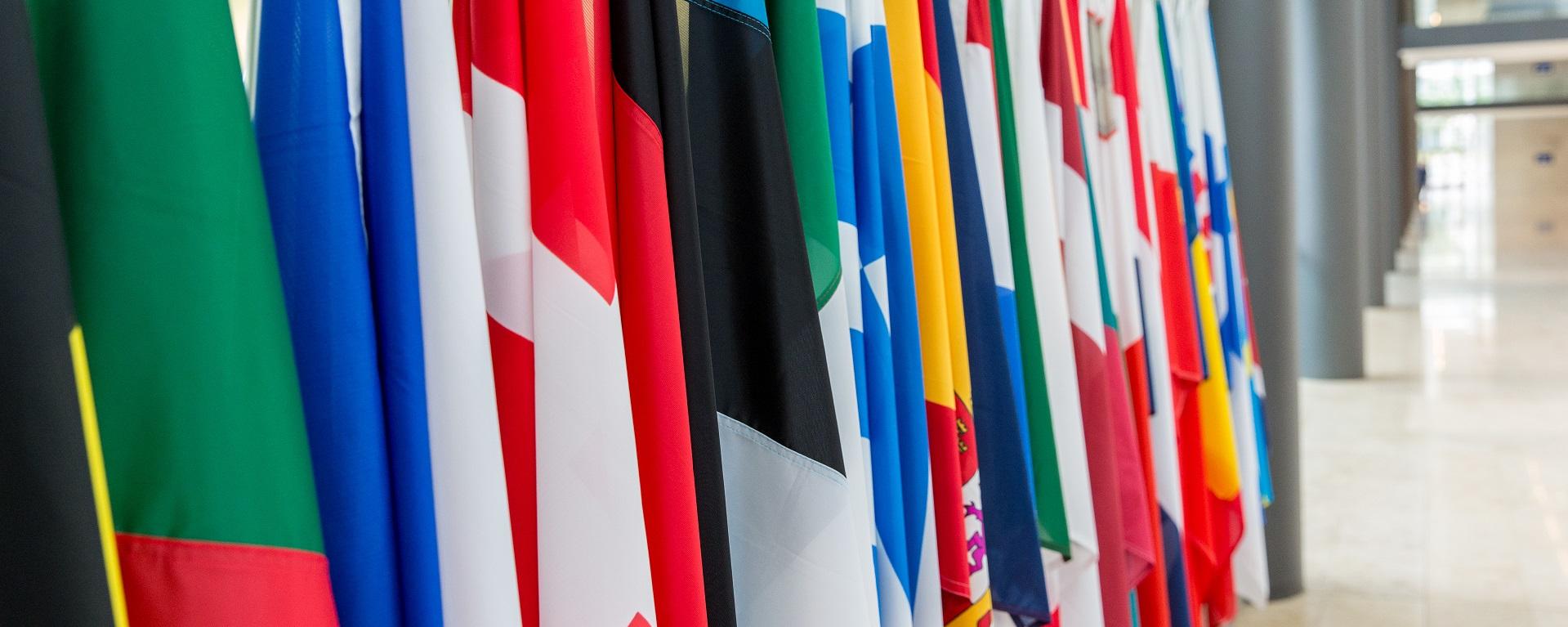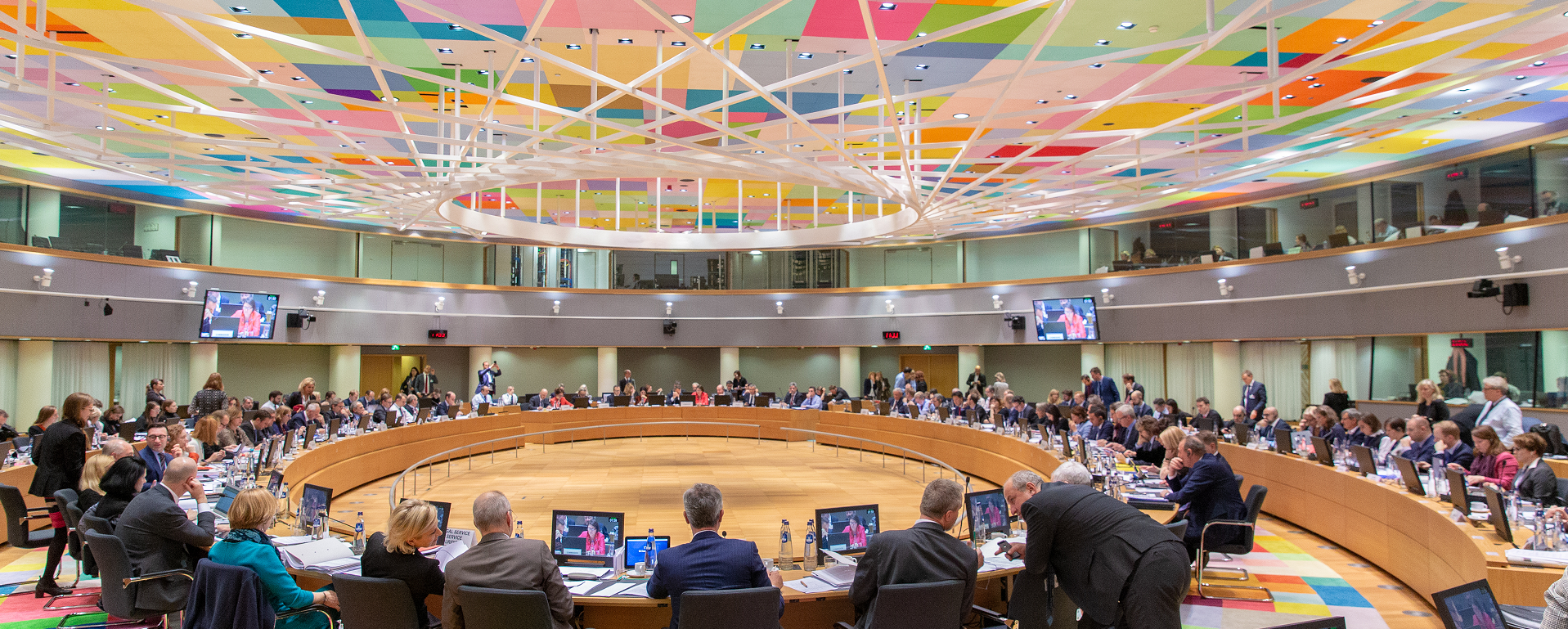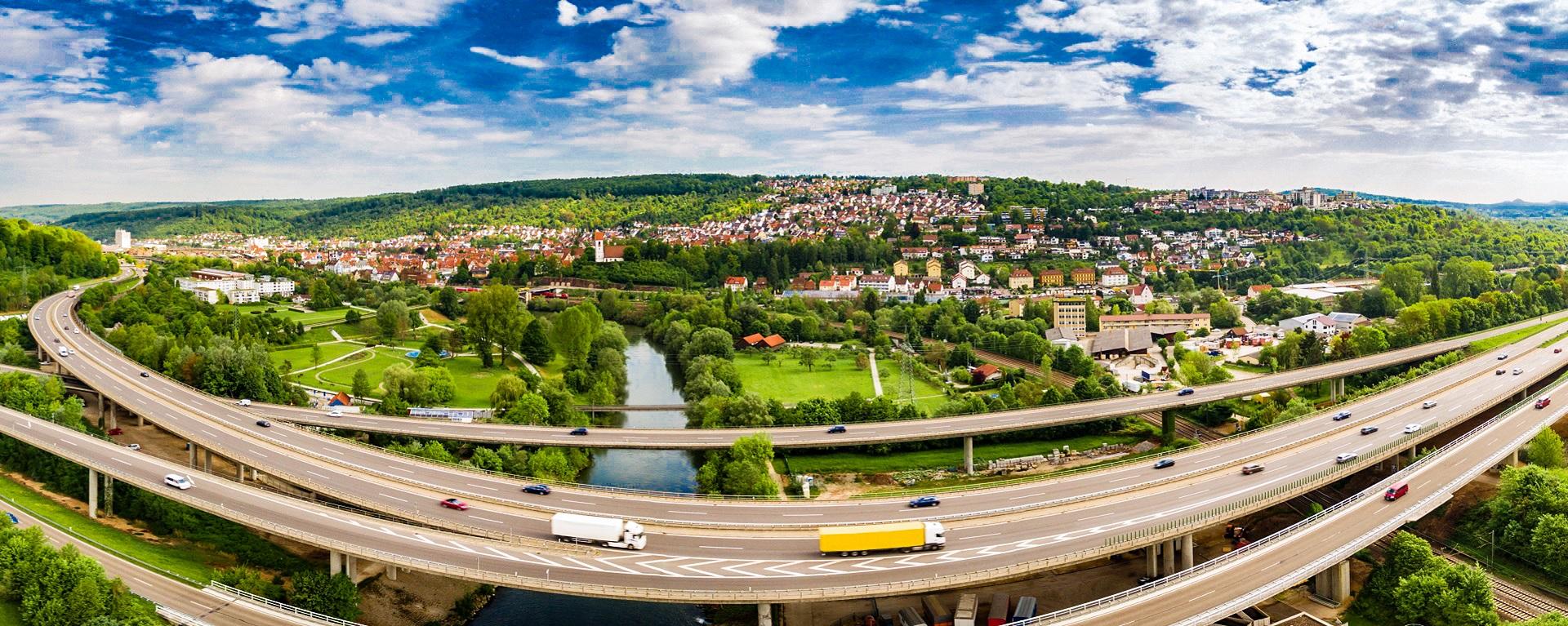Transport is an important economic factor in the EU. By providing employment for 5 % of the population and contributing 7 % to the GDP, it makes a major contribution to the proper functioning of the European economy. An efficient and sustainable transport system can produce tangible advantages for Europe in global competition.

European Transport Policy
Background
In its Transport White Paper for the period from 2011 to 2020, the European Commission identified the areas on which it wishes to focus its European transport policy. Each year, the Commission adds specific work programmes to its goals.
In the relevant bodies of the European Union, the Ministry represents German interests in the sphere of mobility and infrastructure policy. We have already achieved a lot in Europe. Nevertheless, we want to make Europe fit for the future. In the second half of 2020, Germany, Portugal and Slovenia will assume the triple presidency. Germany will be the first to take over the chair in the European Council. For 6 months, Germany will guide and coordinate consultations in the bodies of the Council.
The Ministry's policy on Europe is concentrated mainly on four areas, which we are addressing with a package of policy measures:
- Boosting competition in the transport industry and strengthening its competitiveness.
- Enhancing transport safety.
- Sustainable and affordable mobility.
- Maintaining and improving an efficient infrastructure.

Boosting competition in the transport industry and strengthening its competitiveness
The opening-up of the market has been generally achieved in the individual modes of transport. The liberalisation of the airspace was completed in 2003 and of rail freight transport in 2007. Passenger rail transport will be completely liberalised in 2019. There are still optional regulations in passenger rail services, which allow the protection of national public transport services. In road haulage, access to the market is still partly regulated by the existing cabotage regime. To avoid distortions of competition, the Ministry is working towards preventing further liberalisation of road haulage as long as the harmonisation of social legislation in the Member States is not improved.
To ensure the competitiveness of the European aviation industry, the European Commission presented an Aviation Strategy on 7 December 2015. It is aimed, among other things, at providing a sound regulatory framework for creating a level playing field in air transport. The strategy also includes a proposal for air services agreements with dedicated competition rules, to be negotiated with certain regions and countries outside the EU.
An important project for the economic efficiency of air transport is the establishment of a Single European Sky (SES). SES and the accompanying SESAR research programme (SES Air Traffic Management Research) are aimed at optimizing the current air traffic management by harmonizing existing national systems. To achieve this, it is necessary to have a new approach to revising the SES regulatory framework and to accelerate the work carried out by SESAR.
Innovative technologies and the advancing digitalization of the transport sector are key to the competitiveness of the European freight transport industry. The Ministry welcomes relevant initiatives at the European level, since it is the only way our industry can survive international competition in the long run.
Finally, one way of enhancing competitiveness is by reducing administrative burdens. It is mainly small and medium-sized enterprises that suffer from the consequential costs of bureaucracy.

Enhancing transport safety
In the fields of shipping and aviation, both international modes of transport, the EU places a lot of emphasis on implementing standards developed at the international organisations IMO and ICAO. However, the EU provides even more safety for its citizens by developing additional rules, such as the blacklists, which list unsafe airlines or ships.
As Europe grows closer together, road safety activities cannot stop at national borders. As the number one transit country in Europe, and as a country with a high density of traffic, Germany is keen to see Community involvement. The Ministry is focusing particularly on innovative vehicle technologies, such as driver assistance systems (e. g. turn assist systems or emergency braking systems) and automated and connected driving.

Passenger rights
Increasing mobility also means an increasing demand for safe and reliable travel services and comprehensive consumer protection. Uniform passenger rights across the EU, applicable to all modes of transport, provide travellers with a legal right to compensation and assistance in the event of delays or cancellation of flights, trains, buses or ships.
Regulations (EC) No 1371/2007 of the European Parliament and of the Council of 23 October 2007 on rail passengers' rights and obligations and (EC) No 261/2004 of 11 February 2004 establishing common rules on compensation and assistance to passengers in the event of denied boarding and of cancellation or long delay of flights are currently being revised. For more information on EU passenger rights, click below.
https://www.bmdv.bund.de/EN/Services/Passenger-Rights/passenger-rights.html
Provisions on accessibility allow passengers with reduced mobility to take almost every type of trip.
further information

Sustainable and affordable mobility
If we want to maintain our mobility and remain competitive, we must find solutions in Europe that will allow us to organise the forecast traffic growth in a way that will allow sustainable and affordable mobility on efficient infrastructures.
In all this, it will be important to combine additional efficiency enhancement with promoting innovations in the field of digitalization and reducing our dependence on fossil fuels. Transport, which is indispensable for the population and our economy, needs to become more energy efficient, cleaner and quieter. Here, it is important that we find international solutions, since noise and pollutants do not respect national borders.
To make air transport more sustainable, we must manage the European airspace in the best possible way. If we want to increase airspace capacity in central Europe, which is approaching its limits, it is necessary that we first revise the European regulatory framework (SES) and swiftly develop new technological solutions through SESAR.
In the field of electric mobility, Germany is at the forefront. At EU level, the Ministry is championing an approach that does not favour a specific technology. Standardization, especially regarding the charging infrastructure, is of crucial importance for the economic success of the European industry.
The Ministry is supporting the strengthening of rail services at the European level, too. We need the railways if we want to achieve our climate change goals and manage the expected traffic growth. At the national level, our aim is to double the number of rail customers by 2030 and the same time shift more freight traffic to the environmentally friendly railways.

Infrastructure
To help Europe come together and to provide fast journeys for its industries and citizens from Poland to Portugal, from Scandinavia or Ireland to the Mediterranean Sea, the EU is aiming to achieve a single European transport area with uniform standards. To this end, a trans-European transport network (TEN transport network) was designed and its development is supported with EU funds. The TEN network includes the transport modes (rail, road, waterways) as well as inland ports and seaports, intermodal terminals and airports. It has a dual-layer structure, which comprises a comprehensive and a core network. The core network is due to be completed by 2030 and the comprehensive network by 2050. In addition, nine corridors were defined in the core network. Six of these corridors pass through Germany. They are multimodal and designed to improve in particular cross-border links within the Union. The European Commission estimates that funding totalling 1,500 billion euros will be required for the development of the trans-European transport network in the period up to 2030, of which 550 billion euros will be needed for the core network alone.
Grants for the development or projects on the network will be awarded in accordance with Regulation (EU) No 1316/2013 (Connecting Europe Facility / CEF). Further information on this topic can be found in the section entitled “European funding instruments for the TEN transport network”.
Germany advocates establishing clear priorities in the development of transport infrastructure. This means: Structural and routine maintenance and replacement of the existing transport infrastructure take priority over upgrading and new construction. The main focus here is on bridging gaps and removing bottlenecks. This approach from the 2030 Federal Transport Infrastructure Plan (BVWP) is championed by BMDV at EU level when it comes to fleshing out the Trans-European Transport Network.
However, it is not only the transport infrastructure but also its functionality that is important for the quality and efficiency of the TEN network. For this reason, funding is also provided for measures promoting the digital transformation in the transport sector (e.g. automated and connected driving) and for the deployment of innovative technologies (e.g. alternative drivetrains). In line with the Green Deal proposed by Commission President von der Leyen, the Federal Government is gearing mobility systematically to climate- and environment-friendly technologies.